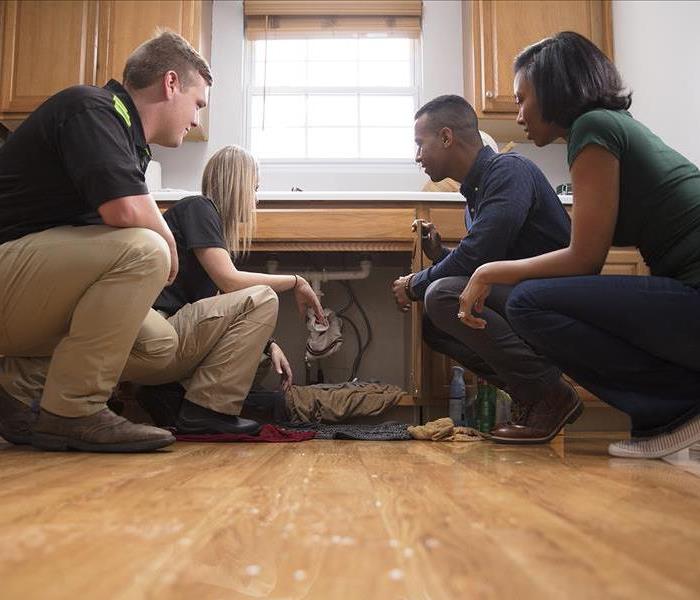Water Remediation Defined
9/11/2020 (Permalink)
Ahhh, water damage.
When you walk into a flooded basement, it's hard to imagine if, or how, it will ever get cleaned up. Thousands of gallons of water, soaked walls, and the furniture is floating. It's a scary sight, a prospect that nobody forsees happening to them.
But, what is water remediation?
Water Remediation is defined as the act of remedying, or fixing, a situation. It is the act of treating or reversing damage created by a surplus of water. Treatment involves cleaning, drying, sanitizing, and repairing any structural damage left in the wake of the water.
The Cleanup Process
There are three key steps must be completed in order to finish the remediation process.
The first step is to remove all standing water from the property. Also part of this process is dehumidifying the area. This will eliminate all water vapor and moisture in the walls and floors, to avoid mold or structural damage. We call this step the dehumidification process.
Next, we move on to cleaning and disinfecting. Why? When the water is gone, professionals are left to clean all of the sewage water, toxins, chemicals, and contaminants that have been left behind. In order to restore the home back to its original condition, it must be cleaned and sanitized.
The final step? The last step in the remediation process is to both repair and restore the impacted property. This translates to replacing any parts of the home that were damaged heavily (think cabinets or flooring that cannot be salvaged) in order to restore the home to its original condition.
Next up, it's time to DRY
As stated above, water remediation begins by removing of all standing water. Once the source of the water has stopped, whether it's a leak that has been blocked or rain having subsided. It's advised that you call a professional like SERVPRO to handle damage of this caliber. Drying your walls and floors is a task for the experts, as a typical home wet/dry vaccuum cannot handle the large amounts of water. At SERVPRO, we use professional level extractors, sub-floor drying systems, air movers, and the highest quality blowers and dryers to remove all of the water.
In order to make sure there is little chance of mold growth, we then take extra measures to remove any water vapor. Any moisture must be removed immediately to avoid any other hazardous sanitary issues.
Don’t Forget the Soap
After the water is removed entirely from the effected area, it's important to SANITIZE. Why? Water damage is often grouped into three categories. These include white water, gray water, and black water, all referring to the level of pollutants in the water.
White water refers to common water damage, which may be caused by an overflowing sink or tub. This is the easiest type of water to clean and sanitize. Gray and black water, however, can be hazardous to all those exposed to it. The reason being that gray and black water leave behind a slew of toxins, chemicals, sewage, bacteria, and other disgusting particles.
Not to fear though. Our professional cleaning supplies, machinery and industrial cleaners, will make certain that your home is clean and sanitized.
A Stitch in Time
The final step of water remediation is the restoration of the damaged property. When water damage occurs, left untreated, it has the ability to warp or damage ceilings, floors, and walls. There are three options to fix this damage, affected areas must be repaired, replaced, or restored. No matter how quickly a restoration company like SERVPRO comes along, it's often necessary to throw out items like carpet or rugs that have taken in too much water and are not salvageable.
Have any other questions? Let us know by connecting on social media!






 24/7 Emergency Service
24/7 Emergency Service
